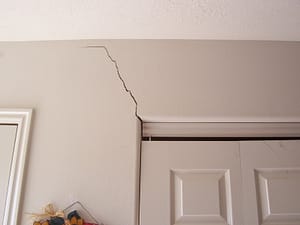Some Known Facts About Best Basement Waterproofing.
Some Known Facts About Best Basement Waterproofing.
Blog Article
How Best Basement Waterproofing can Save You Time, Stress, and Money.
Table of ContentsBest Basement Waterproofing Things To Know Before You Get ThisSome Ideas on Best Basement Waterproofing You Need To KnowBest Basement Waterproofing - An OverviewUnknown Facts About Best Basement Waterproofing
What creates water damage problems in your basement? Pipes that line the within of your walls are simply one example of where water damages can take place.The dirt and ground of your home is extremely important. If there is way too much water bordering your home, however, it can push the dirt into your home and cause the seals of your cellar to become jeopardized. when you see excess water in locations where it should not be, that is an excellent sign that you have an issue.
You apply the covering with a hefty brush made with bristles swirled during application for an appealing, completed appearance. Concrete water-proof finishes can't be used to previously repainted surfaces Silicate-based concrete sealants, additionally known as densifiers, are also appropriate just for walls that haven't been repainted or sealed.
Not known Facts About Best Basement Waterproofing
Since these are passing through sealers, they can't exfoliate or peel off, and you can have paint applied over them. The American Eagle team might find more challenging causes for your moisture issues; there are added solutions available. Plastic sheets and panels may be combined with indoor cellar water drainage systems. They don't stop water from surviving the wall, but they do stop it from wrecking points in the cellar.
A sump pump is needed to move water out of your cellar. In order to effectively advise a solution for your wet basement, call American Eagle for a no-obligation check out. Our specialists will certainly have the ability to clarify which services are alternatives for your home. Why should you waterproof your cellar? Below are a few points the experts can mount to assist the waterproofing process: this is developed for the walls of your basement.

It additionally helps protect against the development of mold and mildew - Best Basement Waterproofing or mold, which can be a rather big carcinogen. Basement waterproofing is a great method to get in advance of potential water damages that may come your method. Do not wait to get in touch with neighborhood professionals, like those at American Eagle with any type of waterproofing questions you might have relating to what cellar waterproofing resembles and much more.
What Does Best Basement Waterproofing Do?
When it concerns shielding your home, one of one of the most essential steps you can take is cellar waterproofing. A completely dry cellar not just guarantees a risk-free and healthy atmosphere for you and your family, but it likewise assists to avoid pricey water damages and mold and mildew growth. In this post, we will certainly important link review the value of basement waterproofing, the advantages it gives, and exactly how you can go around securing your room.
When it comes to basement waterproofing, there are numerous methods that can be utilized to maintain water out of your room. These include indoor sealants, outside waterproofing membranes, and drainage systems. The most effective method for your basement will certainly rely on aspects such as the degree of water invasion, the problem of your structure, and your budget.
To conclude, cellar waterproofing is an important step in shielding your home from water damage, mold and mildew development, and various other problems. By investing in basement waterproofing, you can make sure that her comment is here your space remains dry, safe, and healthy for you and your family. Not just does basement waterproofing give satisfaction and protection for your home, yet it can also boost its worth and conserve you cash on power costs in the future.
3 Easy Facts About Best Basement Waterproofing Described
Interior sealers are a type of basement waterproofing method that involves applying a sealer to the within of the cellar walls and floors. Water can permeate into a basement with splits, voids, or permeable concrete, particularly in areas where there is high groundwater or inadequate drain. This can bring about water damage and mold growth, along with damage to the foundation navigate to this site and architectural honesty of the building.

It is an effective remedy for avoiding water damage and preserving the structural stability of the building. Nevertheless, it can be expensive and disruptive to install, as it needs excavation around the structure and may include landscaping and various other fixings once the waterproofing is full. This approach is the most dependable and durable remedy for protecting against water seepage in the cellar.
Structure fracture shots are an approach of fixing splits in the structure walls from the inside, without excavating the soil around the structure. The procedure entails injecting a liquid polyurethane or epoxy into the cracks, which after that solidifies and creates a waterproof barrier that stops water from seeping via. This approach is generally used for smaller sized cracks that do not posture a structural risk, and can be finished quickly and with marginal interruption to the building's residents.
Report this page